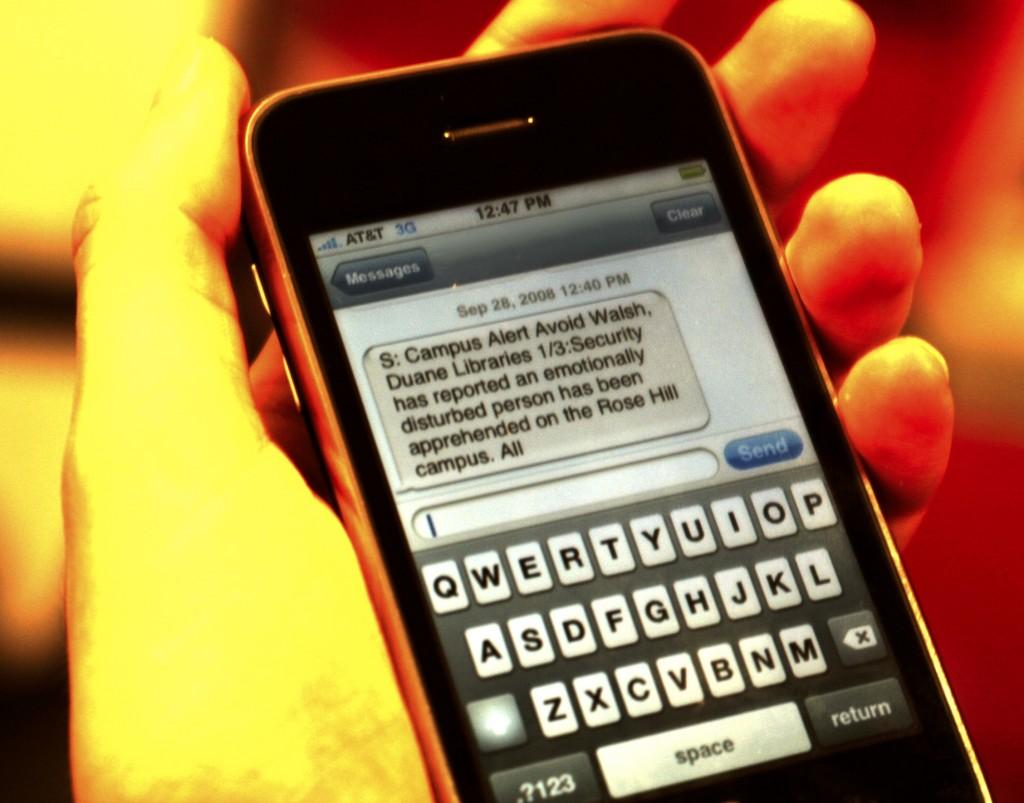Fordham Tests New Emergency Alert System
Varying Degrees of Effectiveness Reported by Students; Administrators Urge Students to Update their OASIS Accounts
June 4, 2011

Published: October 2, 2008
Fordham unveiled its new emergency notification system on Sept. 15 when a “violent” and “emotionally disturbed” man threatened security on the Rose Hill campus. Students reportedly found the system inconsistent and confusing; administrators ask for patience while they work through the kinks of the new system.
Evan Hamilton, Fordham College at Rose Hill (FCRH) ’11, said, “I got eight text messages, two phone calls and four e-mails. I thought the messages were really annoying, and I didn’t really care about it because the guy was nowhere near where I was going to be.”
Other students remain concerned that they didn’t receive any notification at all. Mathew Rodriguez, Fordham College at Lincoln Center ’11, who said that he has updated his information on OASIS, said he was “disconcerted” about the inconsistency of the notification process. “Right now it’s a system that very few people knew about until they were barraged with messages, and that shows the ineffectiveness of the system. Why did some people get 11 and some get three, and some didn’t get any at all?” he asked.
In an e-mail intended for the entire Fordham community, John Carroll, assistant vice president for safety and security at Fordham, outlined the steps of the notification procedure. The process starts with an SMS text message, then goes to a Fordham e-mail, followed by a voicemail, at which point emergency contacts are notified and e-mails are sent to additional accounts. Each time a student is notified, he or she is asked to reply to the message, confirming that he or she received it, thus ending the line of contact. Keith Eldredge, dean of students at FCLC, said that no emergency contacts were notified in this situation due to its localized nature.
The messages that went out to students were brief, warning them of an “emotionally disturbed individual” on the Rose Hill campus and to stay away from both Duane and Walsh Libraries. Security was able to get the situation under control shortly after the messages went out, which prompted a round of notifications stating that it was safe to return to the vicinity of the library.
To the questions and concerns posed by students, Carroll said, “Are there going to be some errors in that process? Of course there are. The bottom line is we’re doing the best we can…We’re trying to reach you wherever you are.”
Carroll went on to say that the system was tested in the past, in a smaller setting not involving students. He does, however, encourage all students to ensure that their emergency contact information is as up-to-date as possible on OASIS. “Fordham has all these resources in place,” said Carroll. “We have…both the personnel and the technology to do this, but naturally, we need the data,” he said.
“We ask for folks’ patience as we try to work out the kinks,” Eldredge added.
“We have always had a notification system here,” said Carroll, who explained that the university merely switched to a different company, 3N, last year. “We wanted the best and most reliable system out there. And I think we have that with 3N.” According to Eldredge, several members of various administrative offices across the university sought out this new, “state of the art” technology in order to best notify the Fordham community in the event of an emergency. He went on to say, “It took about the whole academic year to get the ball rolling,” but Fordham’s new system from 3N was ready for the fall of 2007.
According to their Web site, 3N also serves organizations such as the American Red Cross, FEMA and Virginia Tech. “The 3N InstaCom™ Mass Notification System enables one person to communicate with tens, hundreds or thousands of people anywhere, anytime via any communication method, including phone (land line, mobile and satellite), e-mail, instant messaging, text messaging, fax, BlackBerry®, PDA, pager and more. The 3N mass notification system will continue to cycle through each and every communication device available until the message is delivered and confirmed by the recipient.”
Carroll concluded by saying, “I’m sure that as we all learn to work with the system, we’ll see it’s much more efficient. It’s a learning process for all of us. IT, safety and security and media and communications all understand it, but we also need our faculty, students and staff to understand it.”











